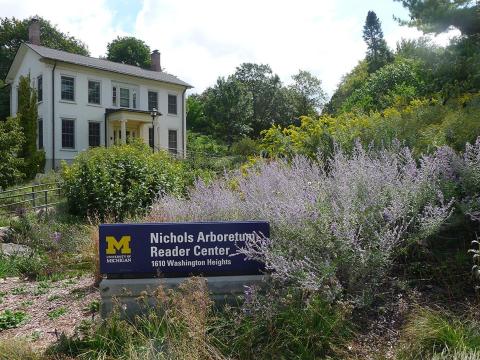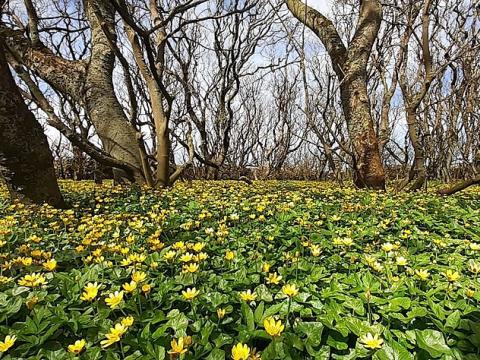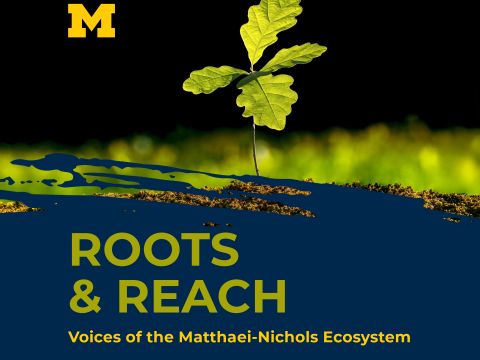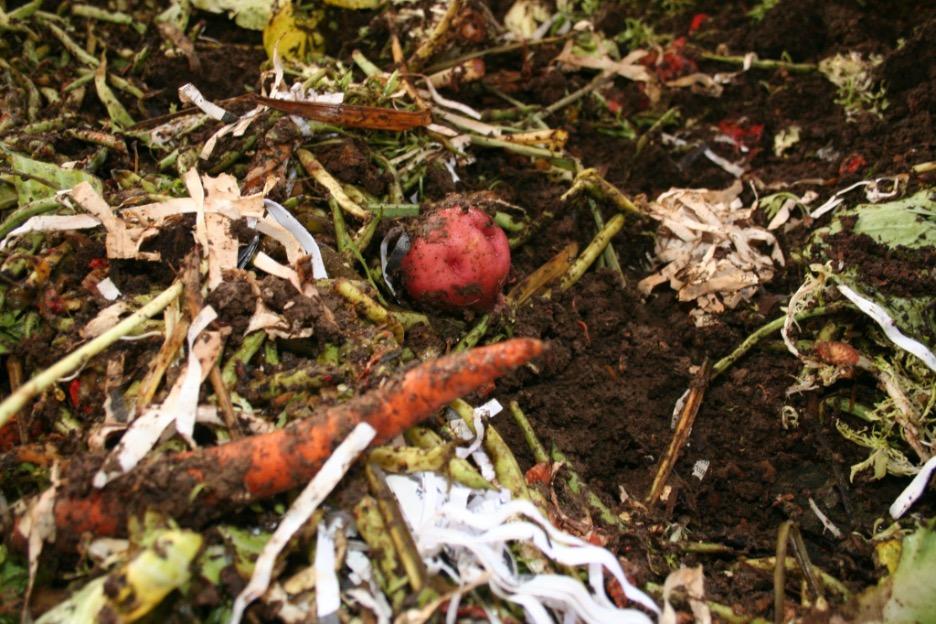
When food and other organic waste goes to landfills, it rots and emits methane, a potent greenhouse gas. A team of researchers plan to reduce Matthaei’s organic waste emissions by upcycling it into useful products and energy. Image source: jbloom via Openverse.
Researchers and staff from the University of Michigan, Eastern Michigan University, Duke University, and 374Water recently won a grant to turn Matthaei Botanical Gardens’ trash into treasure.
The team received $200,000 to fund research on how to convert lawn, garden, and food waste from Matthaei Botanical Gardens into valuable products as well as heat and energy for the gardens’ facilities. The project was funded as part of the Graham Sustainability Institute’s Carbon Neutrality Acceleration Program, which provided a total of $1,160,000 to six research projects that help the University of Michigan meet its goal to establish a carbon neutral campus by 2040.
The project, led by Professor Margaret Wooldridge from the University of Michigan’s Department of Mechanical Engineering, aims to reduce greenhouse gas emissions by preventing organic waste from going to landfills, where it then rots and emits greenhouse gases like carbon dioxide and methane.
Landfills emit 14.5 percent of the United States’ methane, which is 80 times more effective than carbon dioxide at trapping heat in the atmosphere over a 20-year period. In 2020, methane emissions from landfills equaled the emissions from driving 20.3 million passenger vehicles for a year or providing a year’s worth of energy to 11.9 million homes, according to the US Environmental Protection Agency.
Despite their large carbon footprint, landfills remain the main way that Americans dispose of their municipal solid waste. Around 36 percent of all food waste is sent to landfills in the United States, according to a 2018 report from the US Environmental Protection Agency. When only considering commercial and residential food waste, that estimate jumps up to 56 percent.
Rather than toss Matthaei’s organic waste into landfills, where it would do nothing but take up space and emit greenhouse gases, Wooldridge’s team plans to upcycle that waste into useful products like acetone, packaging fibers, fertilizers, biofuels, or heat for Matthaei’s facilities.
“We produce hundreds of pounds, sometimes thousands of pounds, of plant material that has potential for a next phase,” said Tony Kolenic, the director of Matthaei Botanical Gardens and Nichols Arboretum. Matthaei’s organic waste comes from a variety of sources, including tree falls, invasive species removal, natural plant defoliation, pruning plants, and agricultural waste from Matthaei’s Campus Farm.
Much of this organic waste currently gets composted or put into work yards where it decomposes, but if the project is successful, it could divert organic waste from landfills, generate heat or carbon neutral fuels, and give local consumers a greener alternative for certain chemicals and fibers that “might otherwise be produced by processes that are more intensely associated with carbon emissions and fossil fuel feedstocks,” said Wooldridge.
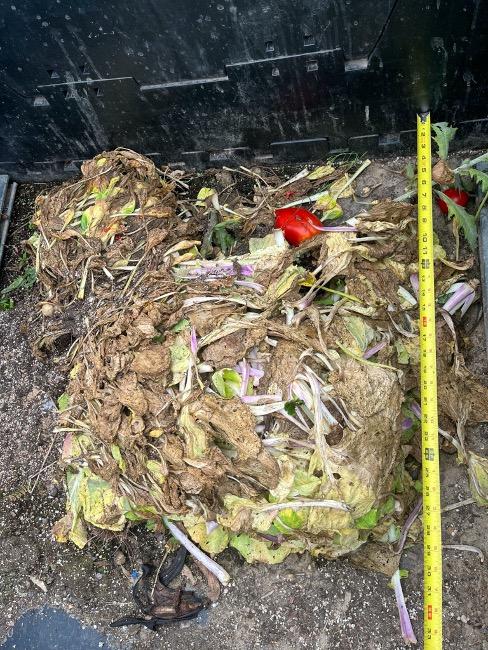
The team estimates that for every ton of organic waste upcycled, they will avoid an equal mass of carbon dioxide-equivalent greenhouse gases emitting from landfills.
By upcycling Matthaei’s waste, Kolenic also hopes to retain the value of Matthaei’s living collections after their death. “Across the botanical gardens and arboretum, our plant collections start as seed. We care for them. We provide them resilience. They bloom, have their annual and perennial cycles, and at some point there could be another life available to them in other valued products,” said Kolenic.
The collections’ new lives are born in two treatment processes that the team plans to integrate. The first is hydrothermal liquefaction (HTL), which converts organic wastes into biocrude, a heavy, oil-like mixture, and other materials that can be further processed or separated into desirable products. HTL requires an external source of heat, which the team also plans to derive from organic waste using a second process, supercritical water oxidation (SCWO).
In SCWO, water is heated in a reactor to around 712 °F (374 °C) at more than 215 atmospheres of pressure. Under these conditions, the organic waste becomes soluble in water and reacts with oxygen, breaking down completely into carbon dioxide, water, and mineral fertilizers. The reactions with oxygen generate additional heat, typically reaching 1202 °F (650 °C). This additional heat makes the SCWO reactions self-sustaining while providing enough heat to support HTL. The inputs for SCWO can be raw organic waste collected from Matthaei Botanical Gardens or low-value waste residues from HTL, which maximizes the resource recovery from Matthaei’s organic waste.
HTL and SCWO are effectively used to treat organic waste and sludge at large industrial scales, but Wooldridge’s team hopes to use HTL in tandem with SCWO at a “town scale” to effectively process between 250 and 1300 tons of organic waste each year.
“Most system’s economies of scale work in your favor if you make it bigger, but we are saying that there is potential with the economies if we actually make them smaller,” said Wooldridge. The team thinks that by upcycling organic waste locally, they can save on the costs of transporting waste, engage local stakeholders in waste upcycling, and reduce the complexity of the waste, which impacts the types of products that can be produced as well as the infrastructure required for pre- and post-processing of the resulting biocrude.
To build up to that town scale, the team first needs to assess how the amount and chemical composition of Matthaei’s organic waste varies seasonally and to determine the types of products they can feasibly produce from the waste and what reactor and processing infrastructure will be necessary. These initial experiments will take place in tiny reactors in Wooldridge’s lab and Professor Andrew Mansfield’s lab at Eastern Michigan University before any upcycled products are produced at scale.
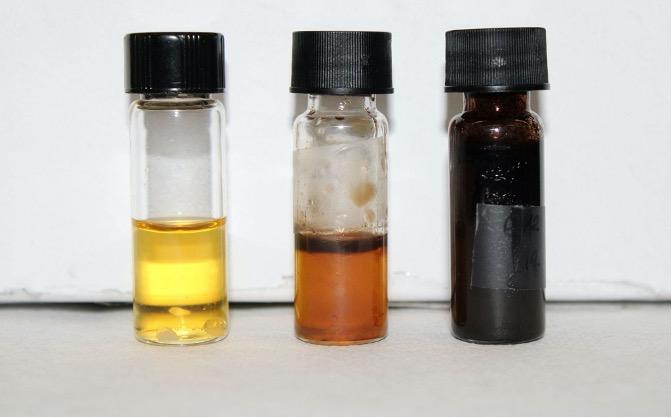
“The [waste] materials dictate the outcome,” said Wooldridge, so the question is “what are the potential products that we can make . . . And how much can we make?”
The initial experiments will use less than one percent of the waste generated at Matthaei Botanical Gardens, but Kolenic hopes that the team can reach a point where essentially all of Matthaei’s organic waste is either composted or upcycled into products and energy using prototype reactors installed at the botanical gardens.
Having on-site reactors also creates a unique education and outreach opportunity by displaying the process of converting organic waste into biofuels and other products for Matthaei Botanical Gardens’ visitors.
“Instead of the normal academic modality of research taking place in a closed lab setting, the whole process can be disseminated,” said Kolenic. “We have the opportunity to gain new kinds of collections and truly become that living, learning lab that we strive to be.”
Derek Smith tells stories about science and the natural world for a wide audience. He has written for institutions, blogs, and in magazines as a freelancer, intern, and volunteer. His writing has been featured in the ScienceBites blogs and the Matthaei Botanical Gardens and Nichols Arboretum newsletter.

